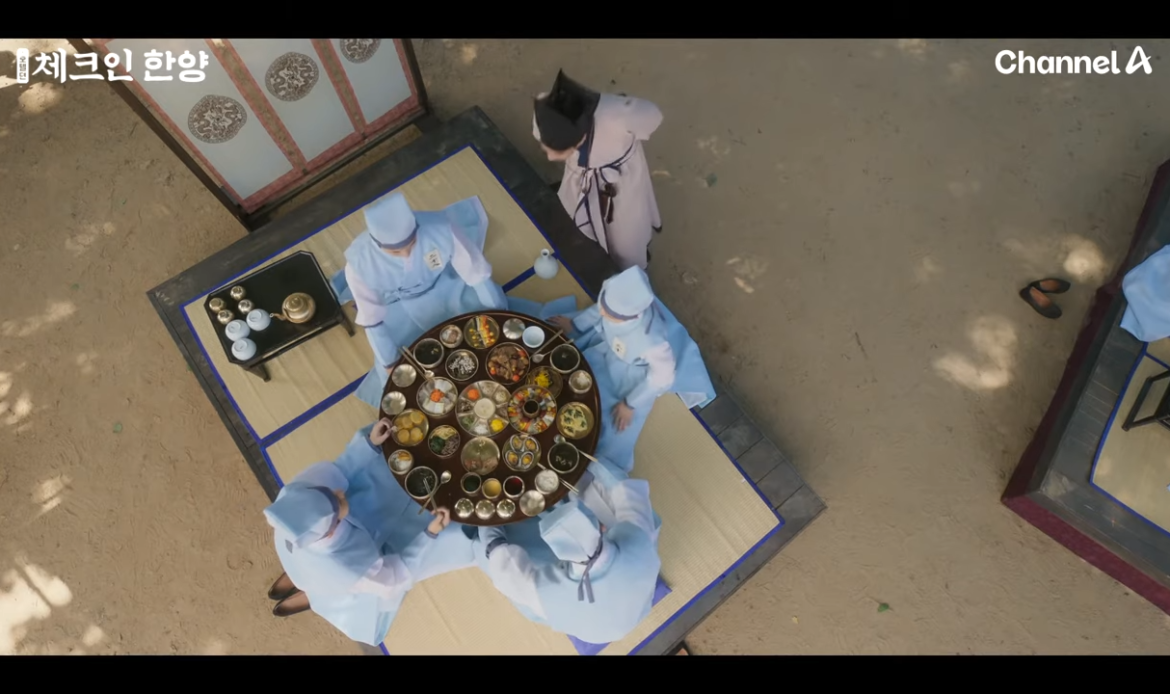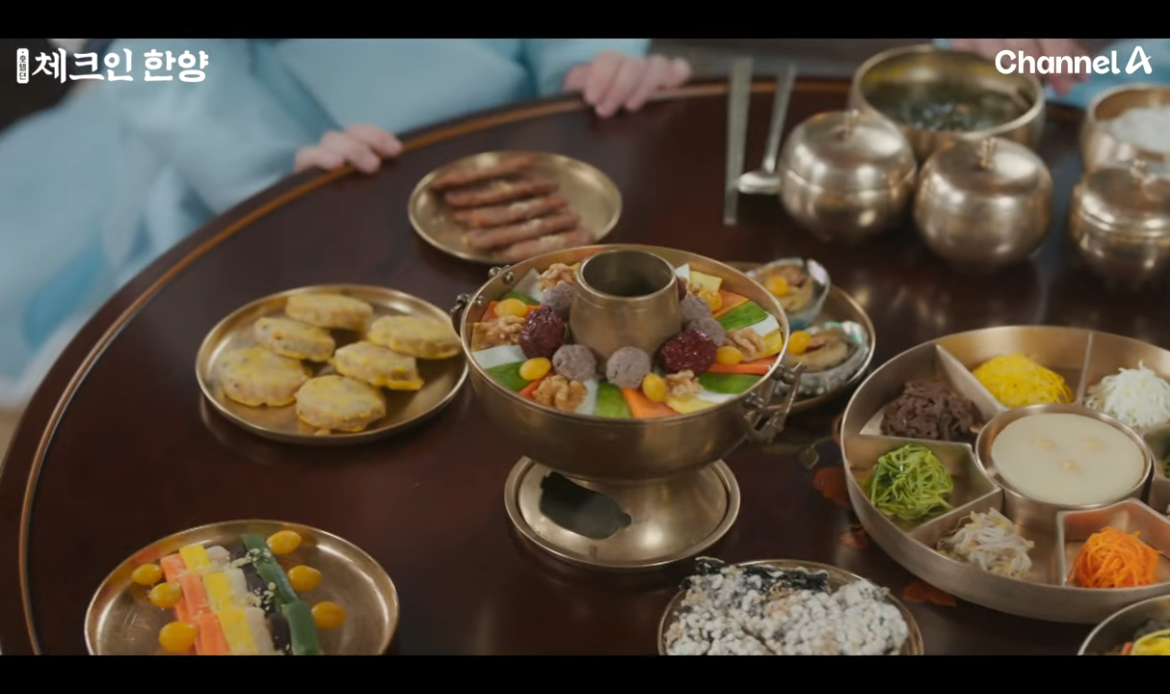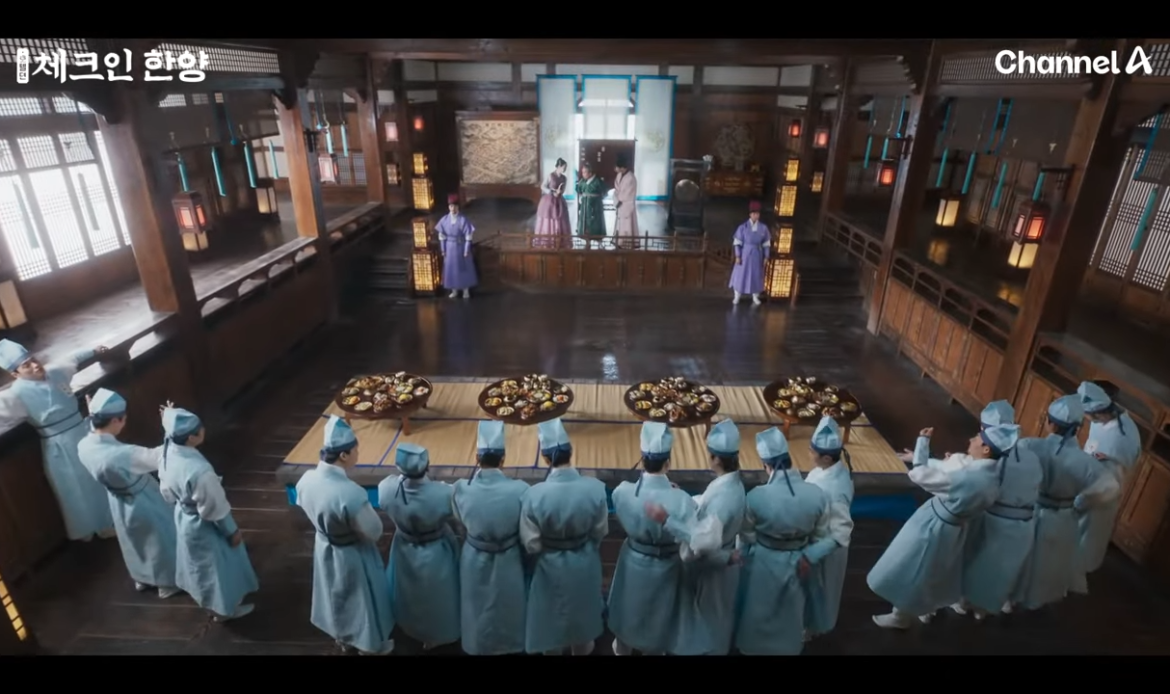In episode 4 of Channel A’s historical fantasy drama Check-in Hanyang, the intern attendants are tasked with recreating the perfect meal presentation for the guests of Yongcheonru. While the Haona Four (Lee Eunho, Hong Deoksu, Chun Junhwa, and Go Sura) enjoy a rare moment of indulgence, savoring a feast of exquisite delicacies, their joy is short-lived.
Their mentor, the head of the food department, commands them to replicate the meal exactly as it was served to the guests. For the interns, every task is an evaluation, and failure to meet the high standards means elimination. While the Haona Four face a tense moment, for viewers, it’s a delightful opportunity to learn about the intricacies of traditional Korean cuisine.

The Elegance of Korean Cuisine
In Korean, the word “jeonggalhada” means “neat and refined.” While food is often described as “delicious,” calling it “jeonggalhada” signifies that the taste and presentation are exceptional. In Korean culture, it’s not just about how food tastes; its appearance is equally important. This idea is captured in the saying, “Good-looking rice cakes taste better.” Harmony between aesthetic beauty and flavor is the essence of Korean cuisine.
The banquet at Yongcheonru features a variety of dishes, including tteokgalbi (grilled short rib patties), galbijjim (braised short ribs), gujeolpan (platter of nine delicacies), jeonbokjjim (braised abalone), and sinsollo (royal hot pot).

Key Dishes Highlighted
- Tteokgalbi & Galbijjim
Both dishes are meat-based and widely recognized even in Korean restaurants abroad. Tteokgalbi is minced beef or pork formed into patties and grilled, while galbijjim is a braised short rib dish, seasoned to perfection. - Gujeolpan
A visually stunning dish served in a nine-sectioned platter, gujeolpan features eight varieties of vegetables and meat, accompanied by thin wheat crepes. Diners mix the ingredients to their liking, creating their own wraps. With its vibrant colors and intricate presentation, gujeolpan is often seen as a work of culinary art. - Sinsollo
A representative royal dish, sinsollo consists of a circular pot heated with charcoal. It contains a flavorful meat broth filled with finely sliced meat, seafood, and vegetables. While it shares similarities with modern shabu-shabu, sinsollo is unique in its classification as royal cuisine, once reserved for the royal family and aristocrats.
Understanding Korean Meals
For everyday Koreans, a typical meal consists of rice, soup, kimchi, and two to three side dishes. A more elaborate setting, such as chilcheop bansang (a meal with seven side dishes), represents a higher level of hospitality and care.
Royal cuisine like gujeolpan and sinsollo is not commonly encountered in daily life. These dishes are often reserved for special occasions such as holidays or significant family events. For many Koreans, even seeing gujeolpan or sinsollo can evoke nostalgia or admiration for the artistry of traditional Korean cooking.

Impressing with Knowledge of Korean Cuisine
For those familiar with dishes like gujeolpan and sinsollo, it’s a sign of deep appreciation for Korean culture and food. Koreans would not only be impressed but also feel a sense of warmth, recognizing the effort and interest in their heritage. If you’ve experienced these dishes and can speak about them, you’re likely to be seen as someone who truly values Korean traditions!
Check-in Hanyang not only entertains but also offers a gateway into the rich, refined world of Korean cuisine.


